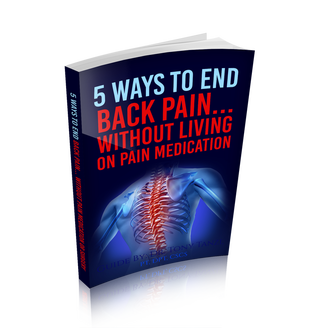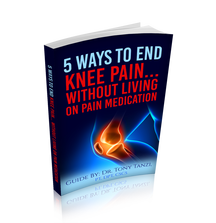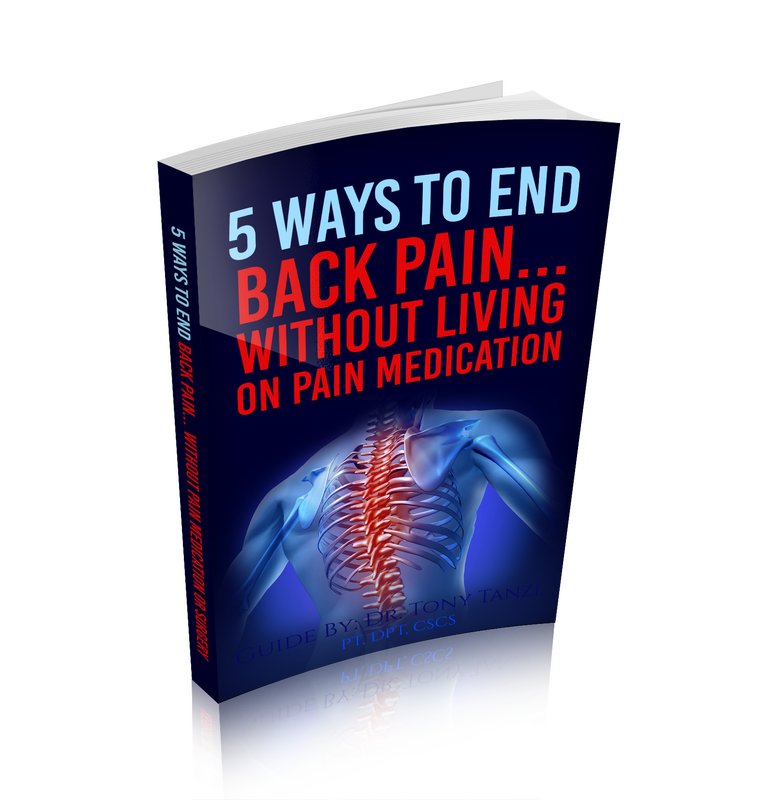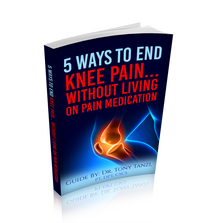|
Had this question asked in my clinic this week that I wanted to share with you (It’s a common question I often get asked about posture)… ’Tony, I’ve recently had Repetitive Strain Injury from work and although I’ve been given a wrist rest for when I’m on the computer, I still seem to suffer from bad posture. What would help improve my posture at work??…’ – Clare, 49, Brewster A lot of people underestimate the power of great posture and the advantages it can provide to your lifestyle. Think of it in this way, a lot of your time is spent at work doing whatever it is that you do, but if you have bad posture throughout your day, in the long run, it can have a serious effect. Some people can spend hours either at a desk or stood up at work and those hours of having bad posture can add up to something serious if it is not dealt with. Here’s a few ways to have better posture and ultimately, make it a healthy habit in your lifestyle. This tip might seem quite obvious but the first thing I’d recommend is to keep your body straight. If you have an office job then adjust your seating if you are sat down for a long period of time. Remember the chair’s features are there for a reason, to make you feel supported! Sit up straight and adjust the chair so that it feels comfortable and supportive. Sometimes, depending on how long you are sat for, even if you are sitting in a good position, it can feel tiring. If this is the case, then try shifting towards the front of your seat with a straight back from time to time. This can sometimes help ease your back muscles and stop you from slouching. If you stand up at work, then standing straight really does help. I know at times it can feel like a relief to rest your body weight on one leg whilst resting the rest of your body on a desk or worktop. Sound familiar? Unfortunately this is pretty much how not to stand. Ultimately all you are doing to your body is putting strain on particular muscles while you ‘rest’. When standing, make sure your body weight is spread evenly to the front, back and sides of the feet. Another great tip is to get up (if you are not already) and move! Yes you could finish off that one last email but I think we both know that, that one email will lead to something else. As a result, you will not only be glued to your chair all day, but may end up putting more pressure on the neck and back. The best time to get up and moving is when you start to feel your body slouch a little and find it hard to keep in a comfortable position. If it’s possible, try and get up from your chair every half an hour or so and do a few stretches or walk around for a few minutes. Think of it as a coffee break for your body. After a few minutes you’ll come back to your desk refreshed and ready to start working. If like Clare, you are thinking of using posture-friendly props, then great. They are easy to find and can make a big difference to your posture at work. As Clare has done, she has decided to use a wrist rest to help ease her symptoms of Repetitive Strain Injury. However there are many other props that will help you at work. Footrests, back supports and even a pillow can help ease back pain. Even positioning your computer screen in level to your resting eye position, will help avoid straining the neck with the head tilted forward. If you don’t work in an office and are based more outdoors, then even using correct footwear, bags and backpacks can help minimize back strain and can encourage good posture. So my answer to Clare is this- yes, a prop can help ease pain from poor posture, but remember to put the other tips in place too. The solution lies not only in putting these actions in place, but also committing to these tips in the long run. It may not be a quick fix but you will be easing your pain in the long term. This is one of the healthy habits that everyone needs in their working day!
0 Comments
Have you ever wondered what the most simplest thing for getting healthy would be? Look no further, you’ll know about it once you’ve read this article. A lot of patients we see are always on the look out for new ways to feel great, and live a healthier lifestyle – especially after experiencing something like an ankle injury that puts them out of walking for a while, or a bad back that’s kept them resting in bed for days. But when it comes to health, most of us start to over complicate things. We think about what foods we should fill our shopping carts with, what exercise routines we should do, what the best green superfood juice is, but in my opinion, that’s the hard approach. I know as humans we want results fast (myself included!), but that’s often the primary reason why we give up on our new habits after a matter of weeks. When it comes to your health, as with everything else in your life, the key is to be consistent. Let me give you an example… You’ve probably read how around 92% of New Year's resolutions get dropped within the first few weeks of a new year – there’s no point in having a New Year’s resolution and start a rigorous exercise and diet plan, only to stop doing it a few weeks later… Slow and steady progress will make you healthy (and happier) – wanting the quick route only makes it harder. So let’s take a look at… Getting Healthy The Easy, And Most Sustainable Way The easy approach is much different – you take a habit, or a behavior you want to put into action, and make is so small you can’t give it up. A popular example is eating less processed sugar – a lot of people want to incorporate this habit into their daily life but brush it to the side after a week or two. Why? Simply because it’s tough, and they make the habit too big. They throw out all of the sugar in the house, and banish it completely. But a ‘better’ approach that works for most people is to begin slow, by cutting certain processed foods out one at a time, so that the habit is so tiny you simply can’t give it up. From there you increase the habit, and instead of not just eating jelly sweets anymore, you also don’t drink fizzy drinks, then you keep going and you don’t add sugar to your tea, and before you know it, you’ve cut your sugar intake dramatically! Although it won’t work for everybody, because we’re all different at building habits – it’s a great tactic that works for many people. Anyways, this article isn’t about sugar and reducing your intake. It’s actually about another really easy (but also highly effective) habit. It’s one thing that has multiple positive effects attached to it. Can you take a guess at what it is? I already said it isn’t cutting out sugar. Maybe it’s exercise? Or eating more vegetables? Nope, these are too hard for the beginning. It’s something really, really easy. Something you’re probably already doing on most days, but you just don’t do ‘enough’ of it. It’s walking. Let me explain… Getting healthy is all about the small things you do everyday. The small things that don’t require much work, but add up over time, and walking can be a huge contributor to that – walking is like exercise, it just doesn’t feel like it. Here’s the definition of ‘walking’: ‘To advance to travel on foot at a moderated speed or pace.’ That doesn’t sound too hard does it”? Moderate is always good, right? The best part of walking is that you are already doing it. Probably every day! You walk to your car, you walk at home, you walk around your work place – walking is already a habit, you just need to increase the amount of it you do. Slowly… Before I fill you in on how to make this more actionable, I want to give you some of the benefits of walking, short and simple… Walking Gets You Moving! …and everybody knows how important this is. We spend an average of 9.3 hours a day sitting which isn’t good for our bodies! When you are walking you are not sitting, which is a good thing for getting healthy. Your Muscles Get Used! Using your muscles will keep your body moving – if you live a sedentary lifestyle, chances are, you’re increasing your risk of suffering from something like a bad back, and a weak body – which let's face it, if you can avoid that you will! It Helps You Feel Relaxed! Getting fresh air will make you feel more relaxed and less stressed, while getting into the sun will increase your vitamin D production which improves your sleep – helping you to feel fresh each day. Walking has many, many, many positive effects, but you’ll have to find out the rest yourself Anyways, since I want you to begin this habit as soon as possible, here are a few ideas to get you started… Start Slow Don’t think a 5 minute walk is a waste of time, it’s not! Begin with 5 minutes and if you enjoy it, increase it next time to 10! Use Your Legs More If you drive to work, park your car further away and walk the rest. Even better, if your workplace is close, ditch the car altogether. At The Weekend… Take a long walk on the weekend. Take your family or a good friend and just walk. Meet up and walk to a café or park close by. Update each other on what’s new. This combines walking and your social life as well. Isn’t walking just great? When Abroad… When you’re on vacation, don’t take a taxi or the public transport all the time. Walk through the city and talk to locals. This way you’ll discover more places you wouldn’t have seen otherwise and make the most of it. There’s just a few ways you can start to incorporate walking more into your daily life. I personally love to walk. And I walk each day for at least 20 minutes, whether alone, with friends, or my family. I’ve discovered so many places during my walks, came up with tons of ideas and always feel great afterwards Walking is really easy. Finding an excuse for not jogging is rather simple (not a lot of us like jogging), but finding an excuse for not taking a short walk is almost impossible. Take a five-minute walk every day for a week and see how you feel afterwards. Increase it five minutes each week. It’s a great way to start getting healthy.
Let's talk about exercise and back pain… Last week I had a question asked by one of our patients, Jackie, 58, from Carmel And it’s one that we get asked often (especially since the New Years gym rush!) “Is it ok to exercise when my back is hurting? I’ve just got into a good routine sticking to the gym and working out three times a week, and I really don’t want to stop…” I get the frustration, and I also know that the thought of doing any movement at all when you’re going through some kind of pain might feel a little scary… You don’t want to run the risk of aggravating it any more in case it turns into something more serious. You don’t want to go ‘too hard’ in the gym in case you pull another muscle. And you don’t want to wake up one day to find that you can no longer roll out of bed easily, walk down the road, or even drive because what you did, made it worse. But don’t let that worry you too much – that’s rarely ever the case! An aching lower back doesn’t mean you’ve got to be housebound, with heat and ice packs until it magically disappears. You CAN keep moving! In fact, not moving at all can make your back pain worse! Here’s why… If you suffer from lower back pain that comes and goes, gentle walking with exercises designed to improve lower back strength and movement added in, will make a big difference. Walking is a completely natural movement that keeps your joints mobile and muscles working – even those in your feet, lets, hips and torso – which play an important role in keeping the muscles in your back that hold you up right, strong. Stretching combined with walking will improve your backs strength, flexibility and posture, which in turn, can help stop back pain from creeping up on you when you least expect it. What’s more, it can also reduce how painful it feels and how much it gets in the way of day to day life. So here’s the important question to answer now that you know it 100% is ok to exercise even if you’ve got a bad back… What exercise can you actually be doing? Because of course, too much exercise, or exercise that’s strenuous could make it worse or keep it hanging around longer. Introducing Yoga. Even though there’s false beliefs around Yoga, like ‘you’ve got to be flexible’ etc., etc., etc… you can ditch those false beliefs behind because it’s for anyone! Let me tell you why – Yoga helps build strength. Yoga requires you to concentrate on specific muscles in the body when holding poses – many of which improve back strength. When these muscles are stronger your back pain can be greatly reduced and is less likely to affect you as bad as it once did. As well as strengthening, Yoga relaxes the body and reduces any tension in stress-carrying muscles (a.k.a your back!) For people with lower back pain, stretching is important. Stretching the muscles in your legs actually help to increase range of movement in your hips, taking the stress off your lower back – which in addition increases blood flow, allowing nutrients to flow in, taking care of the muscles in your back. It’s also once of the best forms of exercise to maintain and improve a healthy posture. Great for your back, stopping back pain in it’s tracks, and add to that it feels great when you can walk around confident and tall. So there you have it, gentle walks and yoga. Both of these will help you gain back your strength in your back, so you can return to doing the exercise you love the most.
It’s one of the most common agonizing issues that most people aged 40-50+ will ever suffer from… Nagging knee pain. The kind that slows you down in life, frustrates you when you walk up and down the stairs, and even stops you from doing something as simple as your weekly food shopping… And because last week I received this email from a patient of mine, I wanted to share with you the top 3 things to stop doing right now, that could be making your knee pain worse. Here’s an email from George: === “Tony, I’m sick and tired of waking up every day with a dull, nagging pain in my knee. I’m not sure what I’ve done but it’s always there when I wake up, and it always aches when I walk up and down the stairs, walking down especially hurts. Is it something I’m doing that’s making it worse? Thanks!” – George, 54, Brewster. === More often than not, whether you’re dealing with annoying, nagging knee pain, or recovering from something more serious, there’s something you’re doing daily that’s making it feel even worse. So here’s three simple things to stop doing right now, that will make a big difference to your knee pain as quick as TODAY! 1. Avoid sitting with your legs bent for more than 20 minutes at a time There’s so much ‘gossip’ that surrounds knee pain. But this is FACT… you and I were not designed to sit. It goes against every basic, fundamental rule of the way we originally evolved as humans. When you sit at a desk or in a chair with your knees bent underneath, you’re stretching ligaments and muscles and placing your knee in a position that is unnatural – and it really wasn’t supposed to be in for very long. Limit the amount of time you sit with your knees bent, and keep them out straight for as long as possible – and keep them moving too. 2. Avoid taking it too easy, and taking too much rest... One of the most common things we’re always told to do when we have knee pain is to rest. And of course rest is an important part of recovery, but if we rest too much and sit around all day doing nothing, we’re only going to make the knee joint seize up, which means more pain. Try some low impact exercises that are easy on the knees. Swimming and cycling are great and will help you maintain safe range of movement in your knees, without them seizing up! (And if you have an exercise bike – even better! Just put your favorite show on and pedal gently for 10-20 minutes!) 3. Avoid crossing your legs Just like we’re not designed to sit with our knees bent for long periods of time, our knees are also not designed to twist and turn, and sitting crossed legged does just that. In this position, your joints are twisted, your muscles are stretched and you’re vulnerable to injury. Spending an excess of time in this position will catch up on you – in the form of unwanted noises like click clunk and crack – and more swelling. So there you have it, three things that you can stop doing today, to help ease your knee pain fast and stop it from getting worse. There’s obviously so much more you can do too, but these are the fundamentals and if you apply them daily, you’ll feel a huge difference.
|
AuthorDr. Tony Tanzi: Physical Therapist, Triathlete, Runner, Performance Coach Archives
October 2022
Categories |







 RSS Feed
RSS Feed